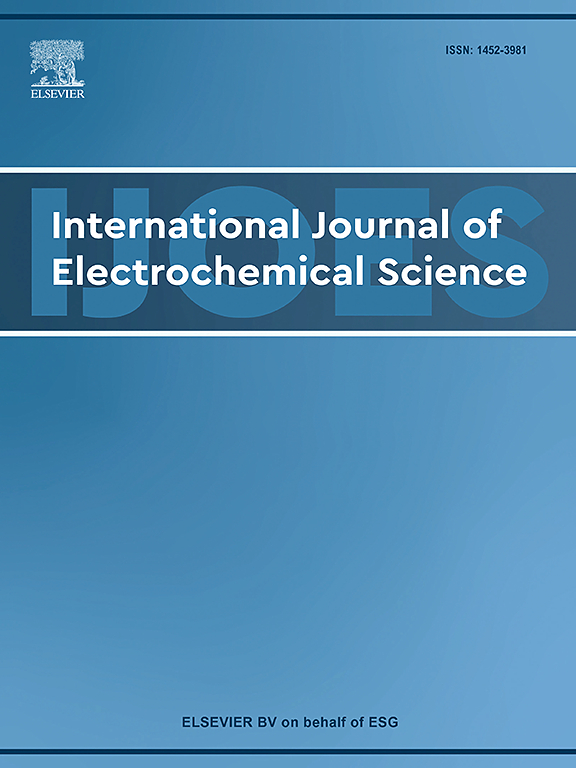Prediction of lithium-ion battery’s remaining useful life using an improved approach combining variational mode decomposition, gaussian process regression, and gated recurrent unit
IF 1.3
4区 化学
Q4 ELECTROCHEMISTRY
International Journal of Electrochemical Science
Pub Date : 2025-02-21
DOI:10.1016/j.ijoes.2025.100973
引用次数: 0
Abstract
Accurately predicting the Remaining Useful Life (RUL) of batteries is of paramount importance. This paper proposes a novel hybrid approach for predicting battery RUL by integrating the improved Variational Mode Decomposition (VMD), Gaussian Process Regression (GPR), and Gated Recurrent Unit (GRU). Firstly, the Grey Wolf Optimizer (GWO) is employed to optimize the number of decomposition layers and penalty factor of VMD. The battery capacity data is then decomposed using the optimized VMD, and the correlation between the resulting Intrinsic Mode Functions (IMFs) and battery capacity is quantitatively analyzed using correlation coefficients. For the trend component IMF1 and the remaining components IMF2-k, optimized GPR and GRU algorithms are utilized respectively to establish prediction models that output the respective components of battery capacity. The final prediction of the battery's RUL is obtained by superimposing these components. Finally, the NASA battery dataset is used to validate the performance of the proposed model, which is compared with other models such as standalone GRU, VMD-GRU, and VMD-GPR-GRU with a single kernel function. The results demonstrate that the proposed model can efficiently capture battery degradation trends with higher prediction accuracy and generalization capabilities compared to single models. Specifically, the model’s prediction results show that the average MAE was 0.21 %, the average RMSE was 0.36 %, and the average MAPE was 0.29 %, validating the effectiveness of the proposed research method.
求助全文
约1分钟内获得全文
求助全文
来源期刊
CiteScore
3.00
自引率
20.00%
发文量
714
审稿时长
2.6 months
期刊介绍:
International Journal of Electrochemical Science is a peer-reviewed, open access journal that publishes original research articles, short communications as well as review articles in all areas of electrochemistry: Scope - Theoretical and Computational Electrochemistry - Processes on Electrodes - Electroanalytical Chemistry and Sensor Science - Corrosion - Electrochemical Energy Conversion and Storage - Electrochemical Engineering - Coatings - Electrochemical Synthesis - Bioelectrochemistry - Molecular Electrochemistry

 求助内容:
求助内容: 应助结果提醒方式:
应助结果提醒方式:


